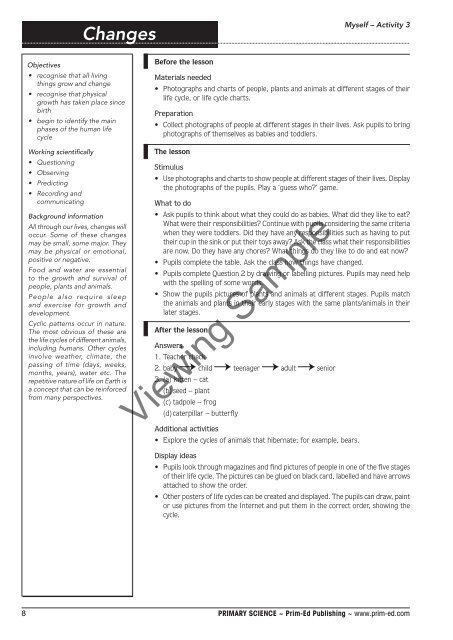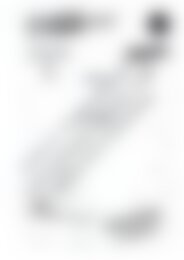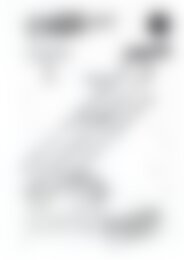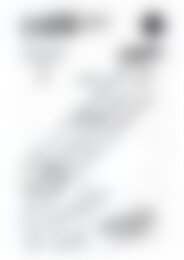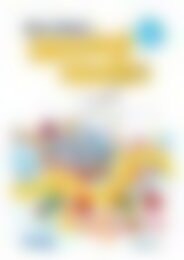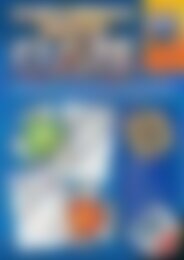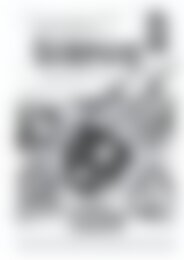PR-0552UK Primary Science - Book 2
Create successful ePaper yourself
Turn your PDF publications into a flip-book with our unique Google optimized e-Paper software.
Changes<br />
Myself – Activity 3<br />
Objectives<br />
• recognise that all living<br />
things grow and change<br />
• recognise that physical<br />
growth has taken place since<br />
birth<br />
• begin to identify the main<br />
phases of the human life<br />
cycle<br />
Working scientifically<br />
• Questioning<br />
• Observing<br />
• Predicting<br />
• Recording and<br />
communicating<br />
Background information<br />
All through our lives, changes will<br />
occur. Some of these changes<br />
may be small, some major. They<br />
may be physical or emotional,<br />
positive or negative.<br />
Food and water are essential<br />
to the growth and survival of<br />
people, plants and animals.<br />
People also require sleep<br />
and exercise for growth and<br />
development.<br />
Cyclic patterns occur in nature.<br />
The most obvious of these are<br />
the life cycles of different animals,<br />
including humans. Other cycles<br />
involve weather, climate, the<br />
passing of time (days, weeks,<br />
months, years), water etc. The<br />
repetitive nature of life on Earth is<br />
a concept that can be reinforced<br />
from many perspectives.<br />
Before the lesson<br />
Materials needed<br />
• Photographs and charts of people, plants and animals at different stages of their<br />
life cycle, or life cycle charts.<br />
Preparation<br />
• Collect photographs of people at different stages in their lives. Ask pupils to bring<br />
photographs of themselves as babies and toddlers.<br />
The lesson<br />
Stimulus<br />
• Use photographs and charts to show people at different stages of their lives. Display<br />
the photographs of the pupils. Play a ‘guess who?’ game.<br />
What to do<br />
• Ask pupils to think about what they could do as babies. What did they like to eat?<br />
What were their responsibilities? Continue with pupils considering the same criteria<br />
when they were toddlers. Did they have any responsibilities such as having to put<br />
their cup in the sink or put their toys away? Ask the class what their responsibilities<br />
are now. Do they have any chores? What things do they like to do and eat now?<br />
• Pupils complete the table. Ask the class how things have changed.<br />
• Pupils complete Question 2 by drawing or labelling pictures. Pupils may need help<br />
with the spelling of some words.<br />
• Show the pupils pictures of plants and animals at different stages. Pupils match<br />
the animals and plants in their early stages with the same plants/animals in their<br />
later stages.<br />
After the lesson<br />
Answers<br />
1. Teacher check<br />
2. baby child teenager adult senior<br />
3. (a) kitten – cat<br />
(b) seed – plant<br />
(c) tadpole – frog<br />
(d) caterpillar – butterfly<br />
Viewing Sample<br />
Additional activities<br />
• Explore the cycles of animals that hibernate; for example, bears.<br />
Display ideas<br />
• Pupils look through magazines and find pictures of people in one of the five stages<br />
of their life cycle. The pictures can be glued on black card, labelled and have arrows<br />
attached to show the order.<br />
• Other posters of life cycles can be created and displayed. The pupils can draw, paint<br />
or use pictures from the Internet and put them in the correct order, showing the<br />
cycle.<br />
8 <strong>PR</strong>IMARY SCIENCE ~ Prim-Ed Publishing ~ www.prim-ed.com


